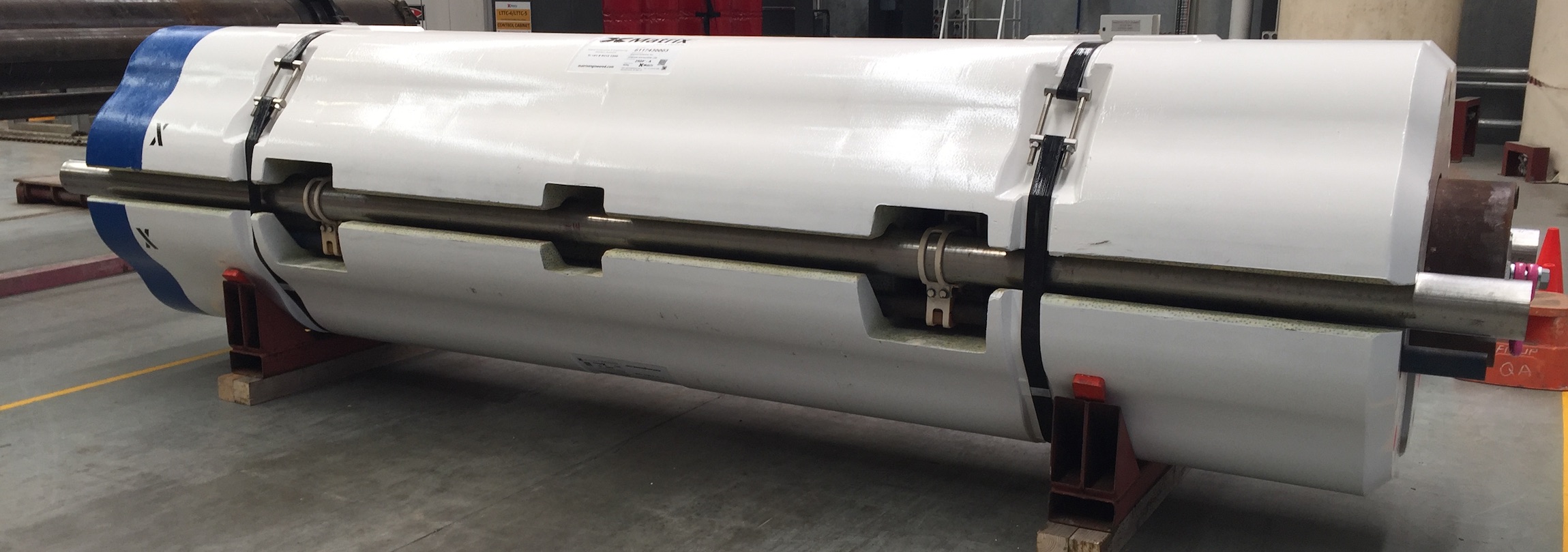Longitudinally Grooved Suppression (LGS®) technology was developed by AMOG Technologies Pty Ltd and employs a novel surface geometry which reduces Vortex-Induced Vibration (VIV) response, and therefore overall drag, in slender structural elements in current flows.
LGS for Drilling Riser Buoyancy Modules (DRBMs)
When applied to DRBMs, LGS® technology can be manufactured using existing production practices as it requires no protrusions or extra parts or added mechanical complexity. The drag reduction and Vortex-Induced Vibration (VIV) suppressive properties come directly from its geometry at minimal sacrifice to the available buoyancy volume.
In addition, LGS® buoyancy modules:
- Are easy to install
- Provide comparable buoyancy and manufacturing costs when compared to conventional modules
- Are easily stacked both vertically and horizontally
- Can be used with existing riser handling and storage equipment
- Can be applied to both new builds and existing structures
LGS modules have been commerically manufactured and installed in the Gulf of Mexico, with another in-situ deployment already scheduled for a multi-million dollar facility off the coast of Australia.
The LGS Research Process
The inspiration for the LGS® comes from biomimetics and was modelled on the large saguaro cacti. The previous wind tunnel testing hypothesised that the shape of the cacti was an evolutionary selection factor due to the lowest drag shapes surviving high wind speeds.
AMOG undertook a comprehensive small scale model testing program at Monash University in Melbourne, at sub-critical Reynolds Numbers covering in excess of 70 variations of candidate geometries. These were further refined in terms of their application to drilling riser buoyancy modules, which resulted in AMOG taking out several patents covering this family of geometries.
As a final step towards commercialisation, AMOG and Matrix Composites and Engineering Ltd conducted large scale model tests at high Reynolds Numbers, sub-critical Reynolds Number model testing and large scale model tests to verify results at prototype scales. These tests were conducted at Oceanic-NRC in Newfoundland, Canada which is a world leading independent large scale hydrodynamic testing facility.
Following these tests, Matrix went on to successfully manufacture the first full scale prototype drilling riser buoyancy modules incorporating LGS® at their Henderson facility in Western Australia and have already fulfilled a number of orders for LGS® buoyancy modules.
LGS Awards
AMOG's LGS® technology received a High Commendation Award at the Australian Engineering Excellence Awards (Vic) in 2016 and Prof Andrew Potts and Dr Hayden Marcollo were awarded the AIRG Medal in 2016 for their work on LGS. AMOG Technologies' LGS was also awarded the Maritime Australia Civil Industry National Innovation Award, presented at Pacific 2017.
LGS is a registered trademark of AMOG Technologies Pty Ltd and has 3 patents pending.

